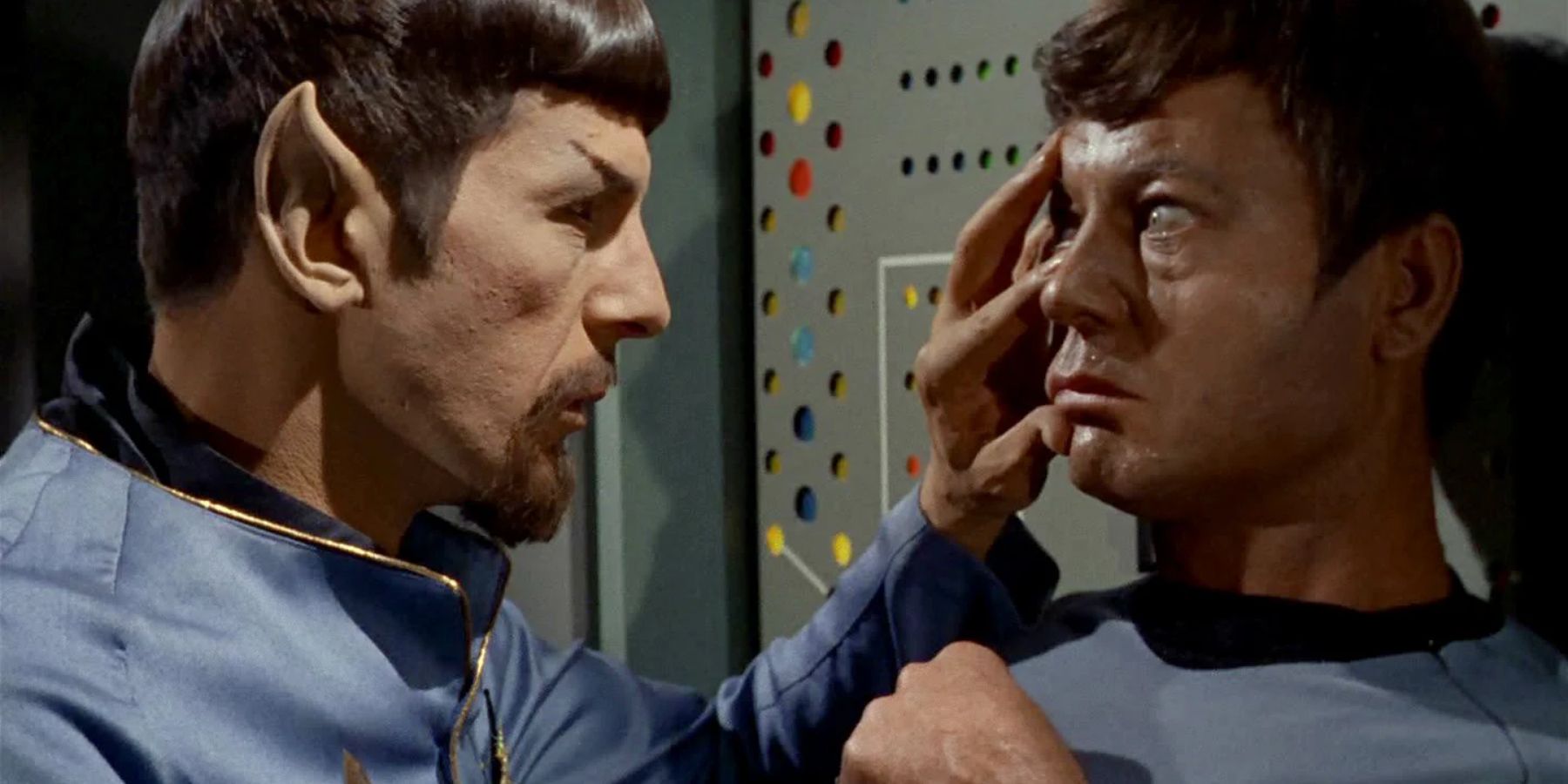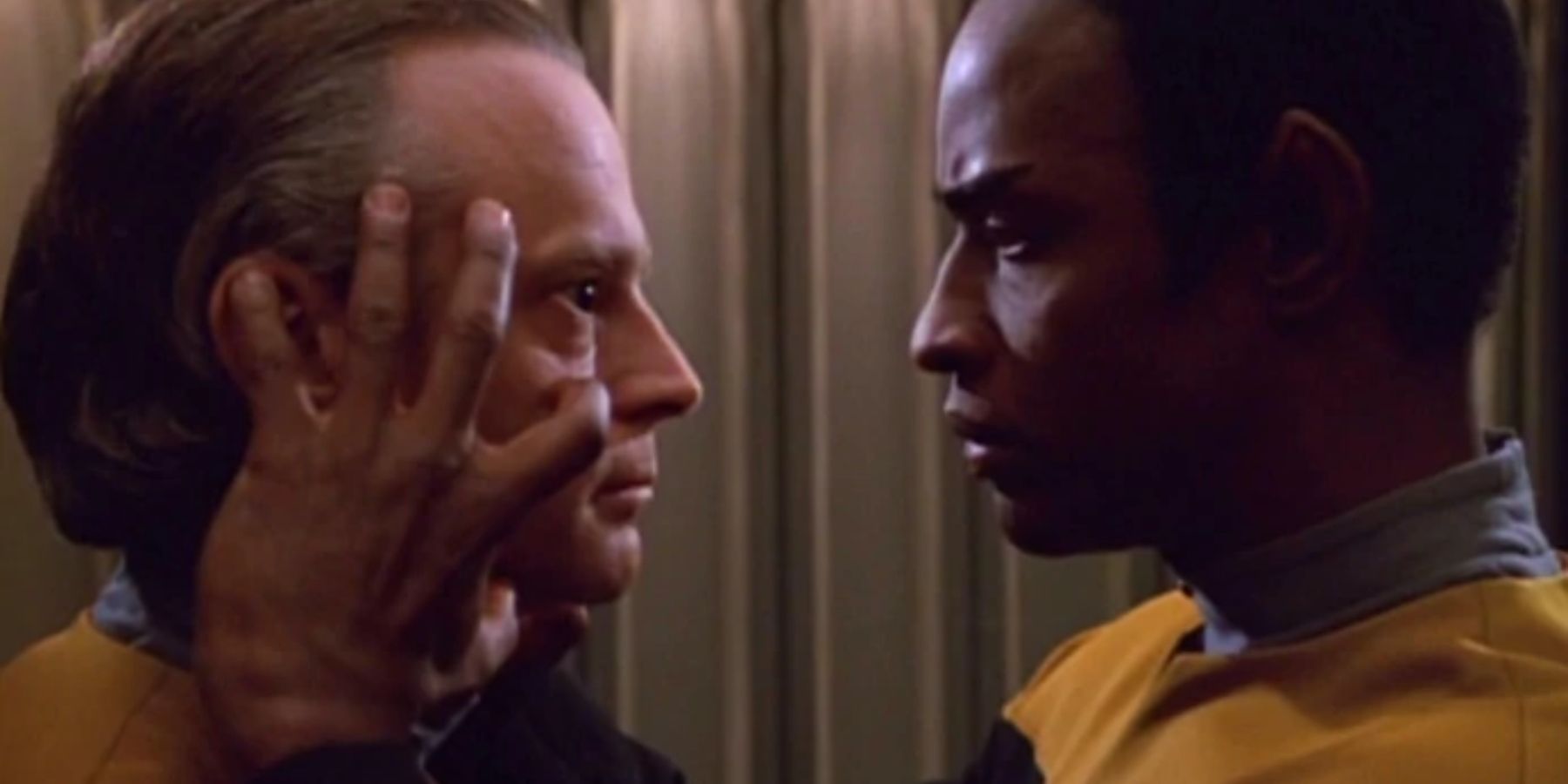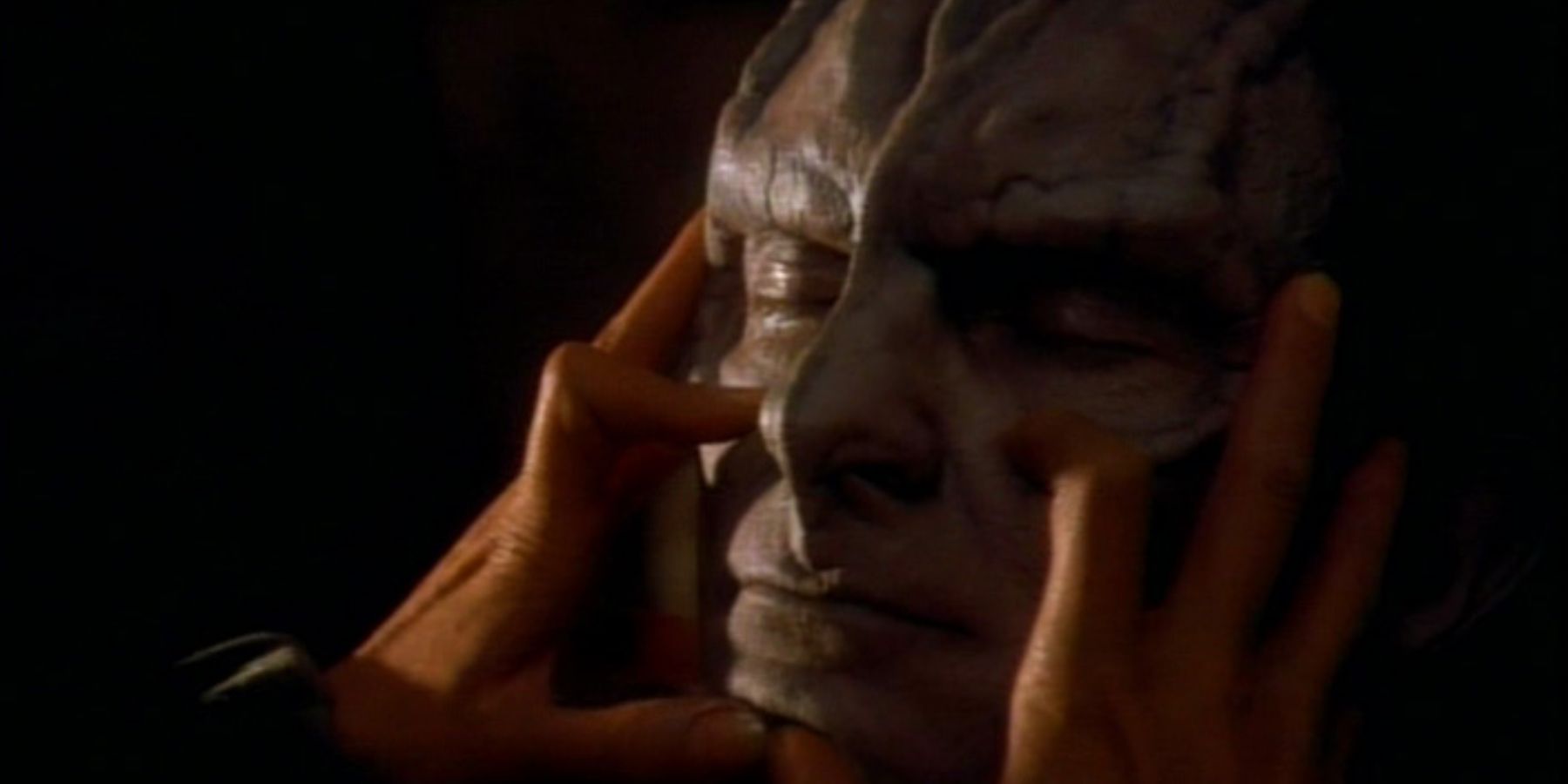Within the expansive Star Trek universe created in the late 1960s by Gene Roddenberry, there are numerous various alien races capable, in various degrees, of telepathic communication. Most notable using these are the strikingly humanoid Batazoids, the Talosians, and of course the Vulcans. Each race presents a unique and interesting variation on telepathy, and different ways in which they use it to communicate with both one another and different races.
While the Talosians and the Melkotiams utilized their telepathic abilities for destructive purposes, weaponizing it to create powerful illusions, others used it for peace or at least for less nefarious purposes. The Vulcan mind meld is one such example, but what exactly is it, and how does it work?
The mind meld is a telepathic link formed between two individuals, allowing for the exchange of thoughts and sometimes feelings, often at a deeply intimate level. The aim of a successful meld is that the two separate minds become one, sharing one merged consciousness. The meld was most often used between Vulcans as a private exchange, not to be shared or used on non-Vulcans. Despite this, the technique has been used countless times over the various series on other humanoid species. It was even possible for some other telepathically capable species to learn the mind meld themselves — most notably an android, as shown in the first season of Picard.
The theory is one thing, but the technique behind the meld is another, and acts as possibly one of the most iconic actions within Star Trek. To perform the meld, it’s most common for the initiator to place their fingers and thumbs in specific locations on the head of the other participant. It’s often also helpful for the instigator to use the mantra:
“My mind to your mind, my thoughts to your thoughts.”
Despite this being the iconic look for the meld, it’s not always required, but the physical contact enhances the telepathic effectiveness considerably. When the meld is used within the private life of two Vulcans, the point is to achieve one consciousness and become one mind. On the other hand, when using the technique to mind meld with others to gain information (as is often done during the series), it’s possible for the initiator to put up a mental shield over their own mind, protecting them from being probed by the mind of those who they are probing.
Shielding is difficult, especially when trying to concentrate on a successful meld without any of the sometimes unfortunate side effects. Often the shield is penetrated somewhat during the meld and emotions, memories, and thoughts are often leaked through into the mind of the subject. An example of this is seen in the Kelvin timeline, where Spock accident leaked through some emotions while mind melding with Kirk. Some races, such as the Cardassians, are highly resistant to the mind meld, being very good at shielding their thoughts from the technique. This was shown most notably during the episode “The Maquis, Part II” from Deep Space 9, where Cardassian Gul Dukat (instigator of one of the most tragic moments in Star Trek history) is being interrogated, and blocks an attempted meld from the Vulcan Sakonna. The bounty hunter race Hazari were also resistant to the mind meld.
While a highly effective method of getting information or sharing an unexplainable experience, the Vulcan mind meld was an often dangerous technique. There were various side effects that could affect even the most experienced of melders. It was often exhausting for both parties involved, physically and mentally. The melding could also result in a disorientation, with the occasional loss of identity and inability to break free from the meld. Sometimes even when the meld was completed, a portion of the person's consciousness, or “katra” as the Vulcans call it, could be lost within the mind of the other. Another potential side effect could be caused by inexperienced melders, and was called Pa’nar Syndrome, a degenerative neurological disorder that could be fatal if left untreated.
The history of this technique's use is hardly explored within the franchise. Audiences know only what is actively shown within the TV shows and various movies. While the mind meld is fairly commonplace within chronologically later shows such as The Original Series, and The Next Generation, it was revealed within Enterprise that during the 22nd century (when the series was set) the technique was considered a “deviant” practice. Only a small portion of the Vulcan population was able to perform it, and those that did were considered outcasts due to its deeply intimate nature. It’s unclear whether before this period of time when the meld was disapproved of if this was something Vulcans were taught or trained in, or what exactly happened to change the cultures views of the act, but it was deeply taboo.
Thankfully this aversion to the technique stopped sometime in the 23rd century, and became a staple of the franchise. The Vulcan mind meld stands alongside the other amazing creations such as the teleportation devices and highly intricate yet complete Klingon language, as one of the things that makes Star Trek feel unique.



